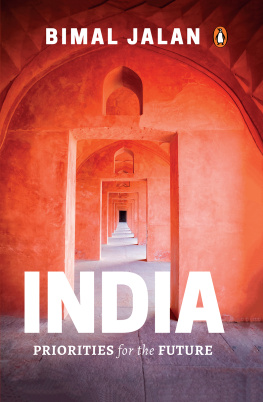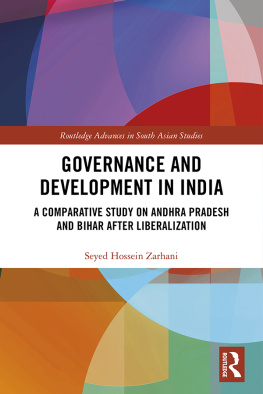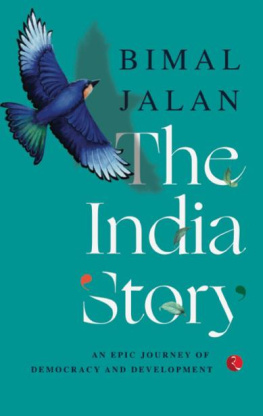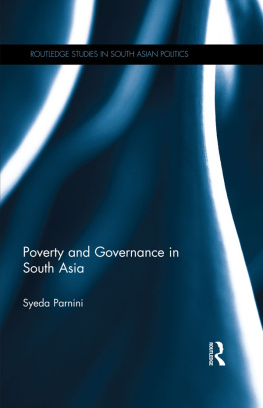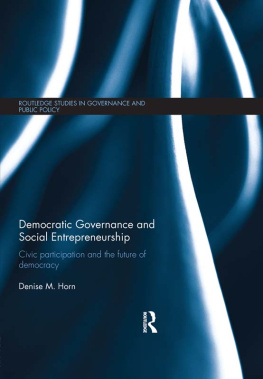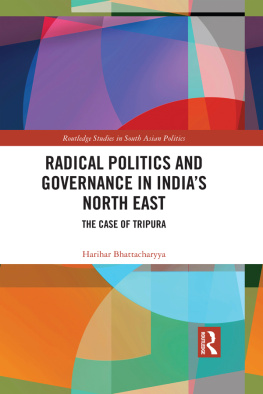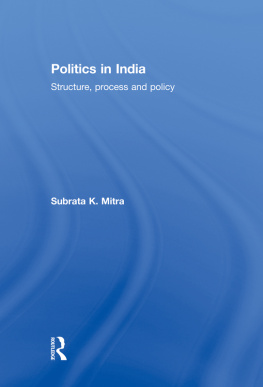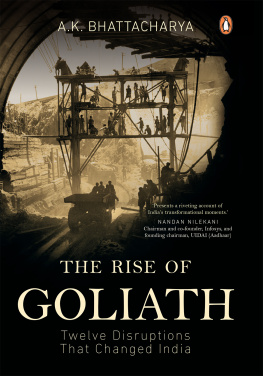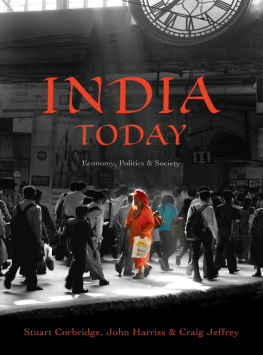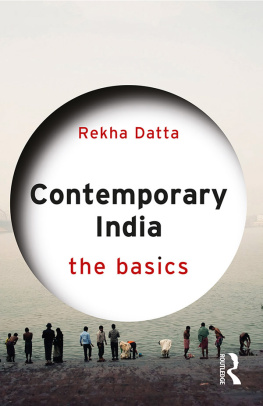Preface
U ntil 2014, in India, when the present government took office with a majority of members in Parliament, there were as many as twelve different governments in the thirty-four years since 1980. Of these, four multiparty coalitions survived their five-year terms with occasional setbacks and shifts in the composition of parties supporting them from the inside or outside. Excluding these four coalition governments that completed their full term, the average term of office of the remaining eight governments was less than two years.
Naturally, considering the governments short life expectancy in office and multiparty coalitions, and each party with different political agendas, it was not feasible for any government to initiate political reforms of a type that could reduce the discretionary powers of ministers or otherwise reduce the role of the Central government in the allocation of financial resources across different states.
Since 2014, the typical political profile of the government, with a single majority party in Parliament, has changed dramatically. Now, it is entirely feasible for the government to launch political reforms to reduce the discretionary powers of independent ministers belonging to different parties and to make political changes that can effectively reduce corruption and administrative bottlenecks in the delivery of services. This book is an attempt to identify some priorities for the future that can be implemented within a relatively short period of two to three years, until 2019, when the present government will complete its first term.
In some ways, 1980 was a watershed year in the nations post-Independence political history, as, previously, governments were formed mainly by the Congress party, which enjoyed a majority in Parliament for as long as thirty years after Independence, followed by two short-term governments during 197779. The first section in the book, India: Then, highlights certain developments mainly in Indias economic policies during the period 19802000. During this time, the government formed by the Congress in 1980, with Rajiv Gandhi as prime minister, initiated a process of loosening the direct controls and regulatory framework for investments by the private sector as well as enabling the freer movement of foreign direct investment (FDI) into the country. However, during this period, there was no major change in the role of the government or the public sector in the economy. In the 1980s, India also suffered a persistent balance-of-payment problem, with very low foreign-exchange reserves. As a result, Indias capacity to meet its import requirements had also become extremely insufficient. In order to tackle these problems, there was an urgent need for a new development strategy and financial reforms to generate higher growth.
The second section, India: Now (200015), deals with the economic and political situation persisting since the beginning of the twenty-first century and highlights some important priorities for the future that can help India realize its full potential as one of the fastest-growing emerging economies in the world. This section also deals with certain issues relating to the separation of powers among the three organs of the state: the legislature, the judiciary and the executive. This may be of particular interest to those who are interested in ensuring that the tussle between or encroachment by either the legislature or the executive in the domain of the judiciary is avoided, irrespective of which party or coalitions of parties is in power.
I am grateful to Satish Choudhary for his meticulous work in preparing the manuscript for publication, and to K.D. Sharma for his help in putting together the vast material, stretching over several decades. I am also very grateful to Udayan Mitra, Ranjana Sengupta and Meru Gokhale of Penguin Random House for their advice, guidance and painstaking efforts to improve the contents of the book. I also appreciate greatly the work done by Rachita Raj for copy-editing the book at very short notice. Without their encouragement and support, this book could not have been completed.
Introduction
I n 2017the year of this books publicationIndia will celebrate the seventieth year of its independence. On 15 August 1947, when India became independent, in a celebrated and oft-quoted passage in his address to the nation, Jawaharlal Nehru said, Long years ago, we made a tryst with destiny, and now the time comes when we shall redeem our pledge, not wholly or in full measure, but very substantially. At the stroke of the midnight hour, when the world sleeps, India will awake to life and freedom.
As we look back to that day, there is certainly much to rejoice in what our nation has been able to achieve. Seventy years ago, in the light of Indias poverty and diversity, there were not too many political observers who believed that Indian democracy would survive for long. Over time, however, Indias democratic system has not only survived but is universally regarded as a role model for the peaceful transfer of power from one government to another after periodic elections.
The Indian economy, which for quite some timein the 1960s and the 1970swas in the doldrums, also recovered and has shown steady growth since the beginning of the 1980s. The economys potential for even faster growth is now believed to be high, according to experts from all over the world. The view that India will become one of the dominant economies of the world by the middle of the twenty-first century is fast gaining traction.
At the same time, it is important to recognize that while all this is true, the working of our political and economic system requires constant vigilance and the launching of reforms, as necessary, from time to time. The processes of governance, the distribution of power among the different agencies of the state, the functioning of political parties and the work of Parliament must be under periodic review. The real issue now is not whether Indias democratic electoral system has proved its sustainability, but whether it can be made to work better in the light of political developments over time.
In terms of governance structure, the twenty-year period of 19802000 was significantly different from the first fifteen years, i.e., from 200015, of the twenty-first century. During the earlier period, there were as many as nine different governments in power at the Centre at various points in time, including two Congress governments, led by Indira Gandhi and Rajiv Gandhi, which were in office for their full terms. During the 1990s, however, there were seven different governments formed by the coalition of parties in Parliament, of which as many as six governments were in office for less than one year.

